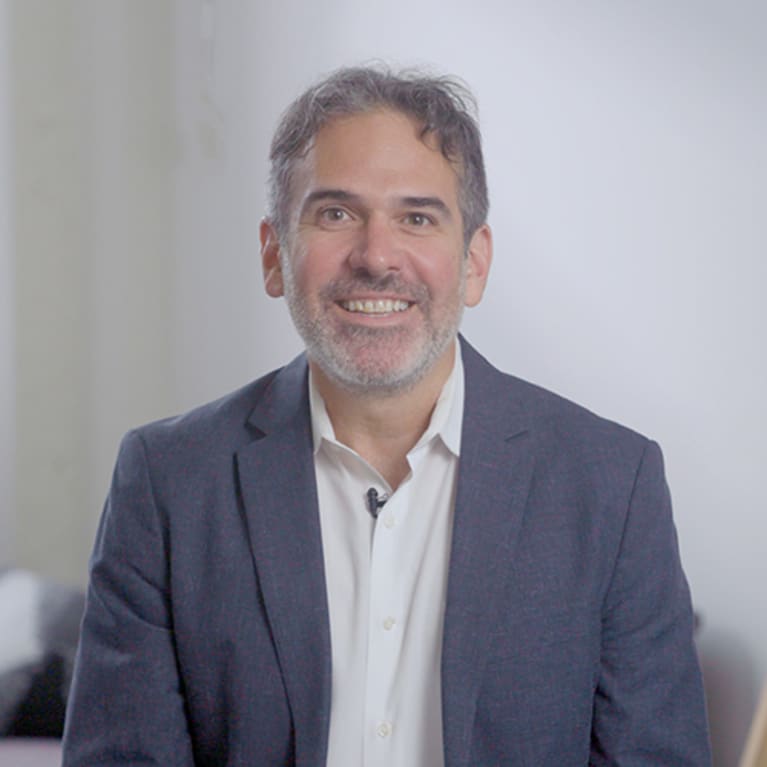
?Engaging white men as allies in the fight to increase diversity, equity and inclusion (DE&I) in the workplace may become easier if the messaging is more palatable to them, according to Michael Baran, CEO of DE&I firm Iris Inclusion and a speaker at the SHRM Annual Conference & Expo 2023 in Las Vegas. And while white men should be called out on any offensive behavior, challenging them should be done with care, Baran said, so they understand why their actions were wrong but don’t become defensive.
 White men still control the vast majority of C-suites and most senior positions in organizations, making it vital to win their support to diversify workplaces. But many have been slow to or won’t embrace DE&I. Speaking during a June 12 concurrent session, “Strategies for Engaging White Men as Allies in Diversity, Equity, and Inclusion Work,” Baran said the way men have historically been socialized from an early age contributes to their reluctance or unwillingness to get involved.
White men still control the vast majority of C-suites and most senior positions in organizations, making it vital to win their support to diversify workplaces. But many have been slow to or won’t embrace DE&I. Speaking during a June 12 concurrent session, “Strategies for Engaging White Men as Allies in Diversity, Equity, and Inclusion Work,” Baran said the way men have historically been socialized from an early age contributes to their reluctance or unwillingness to get involved.
“It’s important to recognize how deep [socialization] goes,” Baran said.
But there was pushback against his message from those who feared that following his road map would cosset white men and negate the experiences of marginalized groups. Baran said using terms like white supremacy and white privilege might make white people uncomfortable, for example.
“What about those who may have been victims of those things? I want to make sure we aren’t creating white comfort and pandering” to white people, said Chandra Hand, a Black woman who is DE&I manager, Americas, at Alstom, a maker of rail cars and transit-related systems. She shared that her ancestors had been raped and forced to work as slaves.
“The idea isn’t to coddle them but to meet them where they are,” Baran said. “Fragility does exist. But this gives people an on-ramp that is gentle but comes with firmness and accountability.”
He said some of the language used in DE&I can be considered counterproductive.
“Almost everything we say is framed in a particular way,” Baran said, adding that not all white men need help with allyship and that other individuals may also need assistance becoming allies. “What is it we are talking about? What is at stake here? It impacts how we understand the issue.”
He said the term “microaggression” could upset individuals because it implies they are aggressive. Plus, the term “micro” implies that the issue is small. A microaggression is a statement, action or incident that subtly, indirectly or unintentionally offends or demeans a member of a marginalized group. Telling a Black person that they are articulate is an example of a microaggression.
“How likely are people to change things if we are telling them it is small?” asked Baran, who suggested referring to microaggressions as subtle acts of exclusion.
Similarly, he said white people can be offended by the term “white privilege” because it can imply that they haven’t had to work to achieve their accomplishments. Telling someone they have white privilege is unlikely to engender them to the DE&I cause.
Baran also noted that some people are still unfamiliar with DE&I concepts and terminology. He added he doesn’t think some understand just how deeply people can be hurt by exclusion.
“A lot of time we have assumptions about what people know,” Baran said. “The foundation of understanding isn’t there.”
He suggested some of the following tactics to spread understanding in the workplace:
- Lay out for employees what the term LGBTQ+ means.
- Tell them the difference between equity and equality.
- Explain to them how, when people feel excluded, it affects the same part of the brain that triggers pain.
Baran also gave strategies for dealing with those who make offensive remarks. He suggested telling the offending person right away that you want to discuss the matter, even if you don’t immediately know what to say. That’s better than just letting the incident pass because you aren’t sure how to react. He said the offended person should assume the other individual wasn’t willfully offensive, start a conversation about the incident and share how they felt. Baran said such an approach would more likely draw someone in and help them understand their actions.
Sofia Bednez, director of HR at the University of Pittsburgh at Bradford, said learning about ways to frame conversations was especially useful. “I think it can help bring people into the discussion,” she said.

